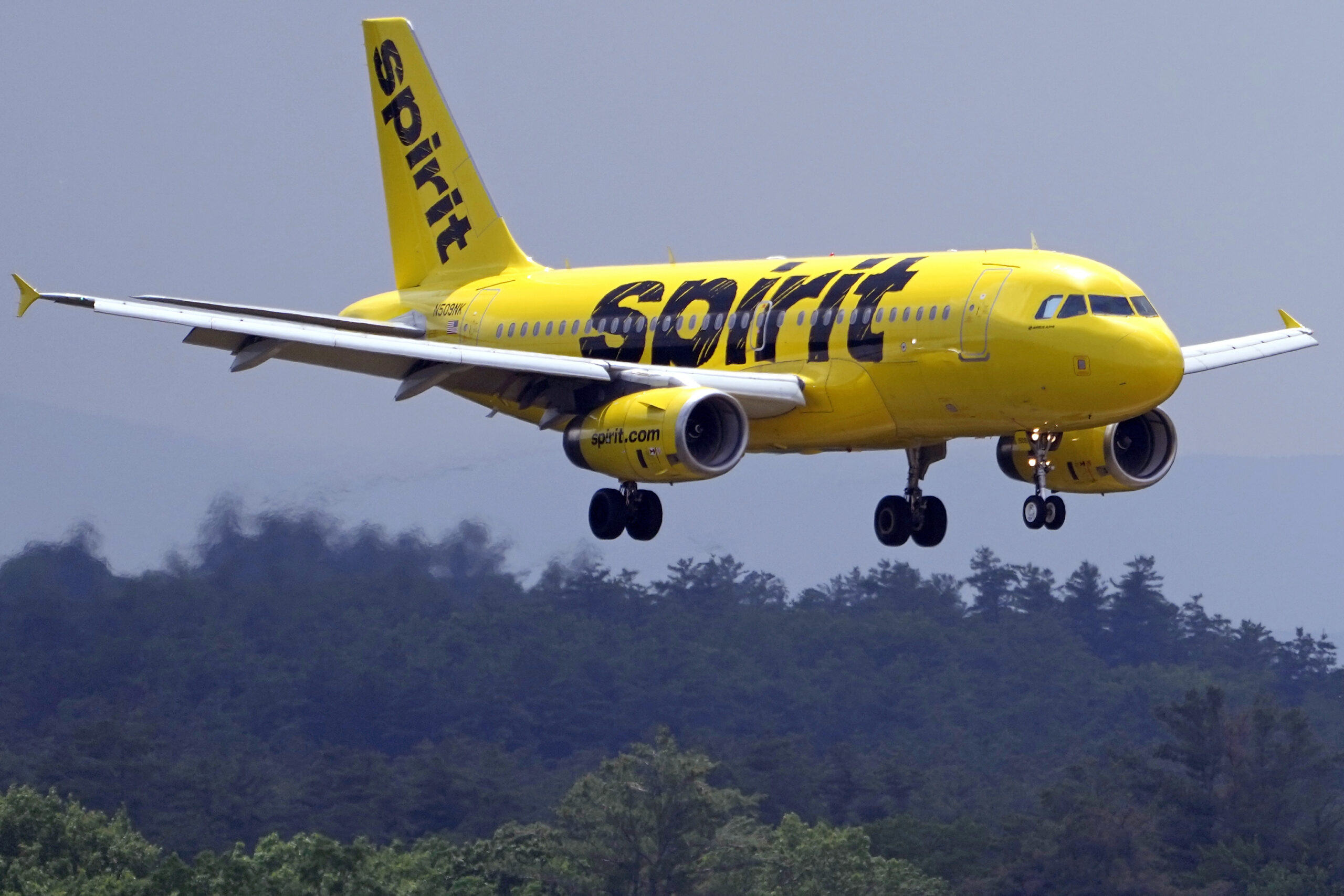Spirit Airlines announced Monday it has filed for Chapter 11 bankruptcy protection, citing over $2.5 billion in losses since 2020 and more than $1 billion in upcoming debt payments.
The move comes as the ultra-low-cost carrier struggles to recover from pandemic-related challenges and the collapse of a proposed merger with JetBlue Airways.
Despite its financial troubles, Spirit plans to continue operating normally during the bankruptcy process. Customers can still book flights and travel without disruptions, the Miramar, Florida-based airline said.
Rising Costs and Declining Revenues
Spirit’s bankruptcy filing underscores a broader struggle to regain profitability. While passenger numbers rose two percent in the first half of 2024 compared to last year, revenue per mile from fares fell nearly 20 percent, reflecting reduced ticket prices.
Compounding this, labor costs have surged, and a glut of flights has driven down leisure travel fares—Spirit’s primary market.

Charles Krupa/AP Photo
CEO Ted Christie acknowledged the financial strain in recent earnings calls, pointing to rising costs and a shift in customer demand.
“We are focused on refinancing our debt, improving our overall liquidity position, deploying our new reimagined product into the market, and growing our loyalty programs.” Christie said, referring to bundled fare options that include perks including larger seats, free baggage, and in-flight amenities.
However, analysts warn Spirit’s new strategy may alienate budget-conscious customers, its core audience, while failing to compete effectively with premium offerings from larger airlines.
Engine Issues and Route Cuts
Operational challenges have further compounded Spirit’s woes. Required repairs to Pratt & Whitney engines have grounded several Airbus jets, forcing Spirit to furlough pilots and reduce its fleet availability.
In an unusual move, Spirit plans to cut its fourth-quarter schedule by nearly 20 percent compared to last year, a bid to stabilize fares. While this strategy may have benefited competitors including Frontier, JetBlue, and Southwest Airlines, analysts say the reduction highlights Spirit’s ongoing difficulties in maintaining market share.

Chris O’Meara/AP Photo
Failed Merger and Industry Trends
Spirit’s financial troubles were exacerbated by the failed $3.8 billion merger with JetBlue. The deal was blocked earlier this year by the Justice Department, which argued it would harm competition and raise fares for Spirit’s low-cost customers. Frontier Airlines also attempted to merge with Spirit in 2022, but was outbid by JetBlue.
Spirit’s bankruptcy is the first by a major U.S. airline in over a decade, marking a dramatic turn for the once-thriving budget carrier. Unlike industry giants including Delta and United, which used bankruptcy in the 2000s to restructure successfully, Spirit now faces significant challenges in navigating fierce competition and evolving market demands.
Whether Spirit can emerge from Chapter 11 and remain a viable competitor in the crowded U.S. airline industry remains uncertain.
This article includes reporting from The Associated Press

